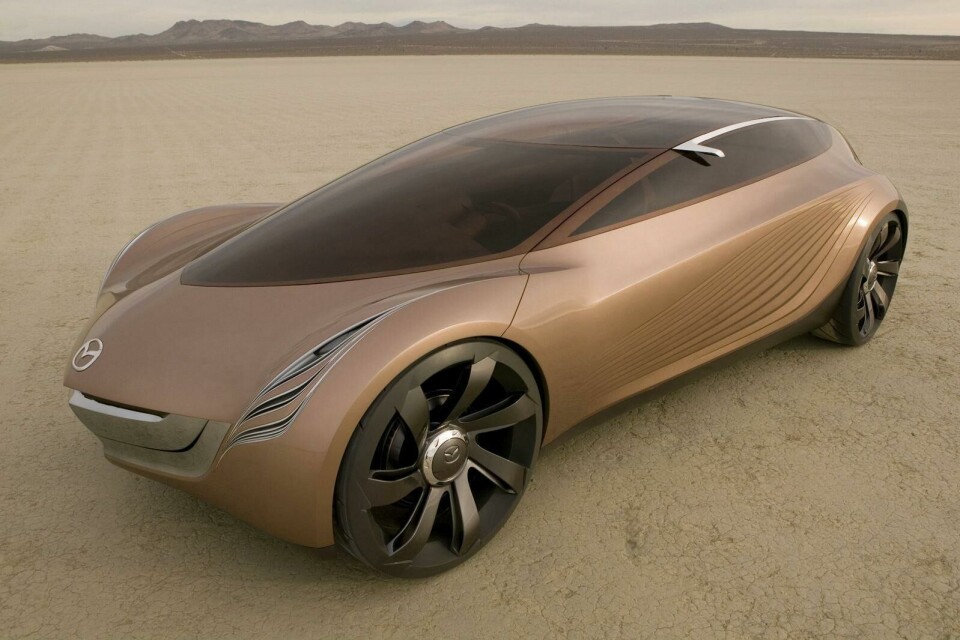
Concept Car of the Week: Mazda Nagare (2006)
A look back at the concept car that went with the flow
This weekend, Mazda is the featured marque at the annual Goodwood Festival of Speed. So what better excuse is there to take a look back at one of the firm’s defining concepts, the Nagare – which translates from Japanese into English as ‘flow’.
The car was being designed as Laurens van den Acker arrived as Mazda’s new director of design. The Nagare was designed at Mazda’s North American studio in Irvine, California, and created by a team led by Franz von Holzhausen, who was Mazda’s North American director of design at the time and now heads Tesla Motors’ design department.

When it was unveiled at the 2006 LA Auto Show, von Holzhausen described the Nagare as “a concept of a concept,” as the showcar was also intended to introduce a form language of the same name that would define Mazda’s production cars until 2020, although that’s not quite what happened in reality.
The Nagare followed a trilogy of Mazda concepts, the Sassou, Senku and Kabura, but represented a shift in ideology towards much more organic and, appropriately, flowing surfaces. According to von Holzhausen, the design team studied motion as part of the project, and looked at how to incorporate forms or graphics inspired by “how wind shapes sand in the desert, how water moves across the ocean floor, and the look of lava flowing down a mountainside.”

Helped by the earthy colourway, the Nagare’s LED lamps and bodyside surfacing do a literal job of referencing wave-formed sand, particularly in the way the creases in the bodyside caught light and created shade. The exaggerated monovolume proportions and huge wheels assisted in adding a level of dynamism and drama that fell a little short in the previous showcars, but was built on with subsequent concepts like the Furai.

For the New York Auto Show the following year, the Nagare’s exterior colour was changed to a liquid metal blue metallic, with contrasting high-gloss white and silver metal detailing. The tyres were also changed to a different material, made of recycled polyurethane and rubber that’s normally used as safety matting in playgrounds and sports fields, that allowed the designers to change the colour of the tyres, too.

The interior was accessed via two gullwing doors that lifted almost the entire bodyside skyward, showing the car’s four-seat interior. In order to showcase Mazda’s proficiency with interior packaging, the Nagare swapped convention for a central driver’s seat up front, while in the rear, the car could be configured either with two sculpted seats, or the seat back could be flattened against the rear firewall to give space for three passengers. Ample, dark red leather featured throughout and each rear-seat passenger had their own infotainment screen – one mounted in the rear of the drivers seat and two flipping out from each door car, adding a level of perceived luxury.

The driver had an impressive field of vision, thanks to the panoramic roof and reclined driving position. The gauge pack included three floating circular pods, containing salient information, while a pair of secondary touchscreen controllers to either side were triangular, referencing the shape of the rotor inside Mazda’s hydrogen-fuelled rotary engine that powered the car. The same form was used for each seatbelt buckle and the cowl over the gauge pack.

Despite the intention that the Nagare concept would introduce a design language that would last until 2020, van den Acker’s departure to Renault in 2009 meant that the only production car to really reference the flowing surfaces of the show cars was the Mazda5 minivan. Internal dissatisfaction with the philosophy also meant that the incoming design director, Ikuo Maeda, quickly introduced the Kodo form language used today.




